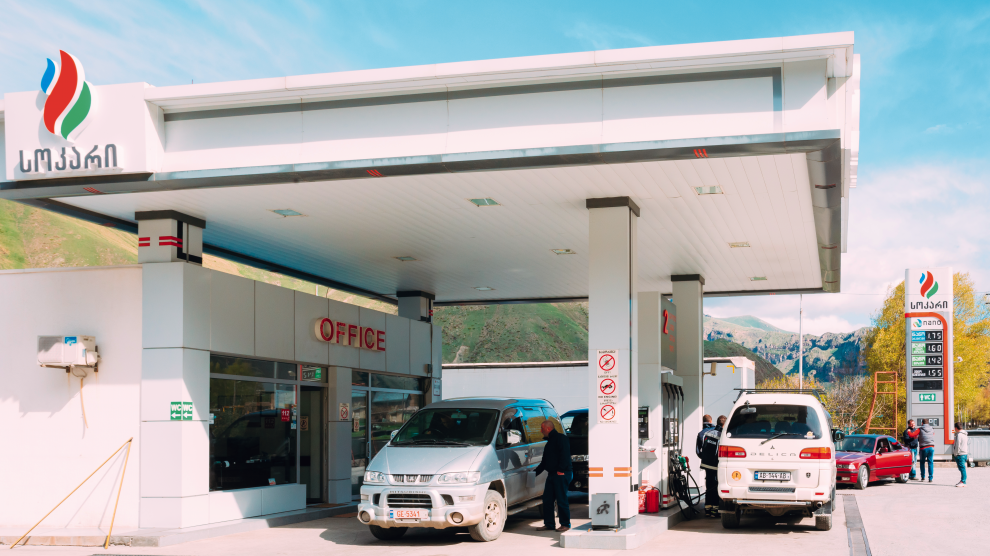The development of Georgia’s energy markets over the past several years has been influenced by a number of factors. Relatively mild economic growth (3-5 per cent annual growth in 2013-2016) influenced energy consumption and supply patterns. The main drivers of structural and regulatory changes in Georgia’s energy markets were the EU-Georgia Association Agreement signed in June 2014, and Georgia’s membership of the European Energy Community, which began in October 2016. These developments will lead to changes in the electricity, natural gas, and crude oil markets, as well as energy efficiency and environmental regulations. Most of these regulatory changes are expected to be implemented by 2023. Furthermore, key EU directives for the electricity market will be implemented by the end of 2018, and for natural gas by the end of 2020.
Focusing on the electricity market, in 2017 Georgia had an 8 per cent growth in total consumption (reaching 11,876 millon. kWh), with a minor decrease in total generation (reaching 11,531 million kWh – Figure 1). Seasonality in electricity generation remains one of the key challenges for the market. Specifically, due to a large amount of hydro generation (79 per cent of total supply in 2017), and higher electricity demand in winter months, every year there is a gap between generation and consumption from September to April. In 2017, this gap ranged between 66 and 279 million kWh. During this period, the primary sources of electricity imports for Georgia (Georgia imported 1,497 million kWh in 2017) are Azerbaijan and Russia. In contrast, most of Georgia’s electricity exports (in 2017 Georgia exported 686 million kWh) go to Turkey, Armenia and Russia. In 2017, electricity import prices varied between 5.2¢/kWh and 3.5 ¢/kWh, while export prices were between 4.5¢/kWh and 1.1¢/kWh. Interestingly, since February 2016, Georgia started playing an active role as a regional electricity hub, transiting electricity from Azerbaijan to Turkey, Russia to Armenia and Russia to Turkey. In 2017 Georgia transited (254 million Kwh) less than a third of 2016’s transit capacity (850 million kWh).
Since 2012, 23 new power plants have been brought into operation, with 777 MW of installed capacity; not yet enough to cover the country’s consumption-generation gap. Most of these investments were based on power purchase agreements between generators and state-owned market operators. An International Monetary Fund mission in 2015 highlighted these government guarantees as potential ‘fiscal risks’ for the country. Attracting more investment in generation remains vital for Georgia. One possible way to increase the attractiveness of the Georgian electricity sector to foreign investors lies in reforming its electricity market. The upcoming market reforms associated with the implementation of the Association Agreement with the EU (for example, unbundling vertically integrated electricity distributors and generators) are expected to help create a competitive electricity market, and hopefully will attract more investments in power generation.
In 2017, the Georgian National Energy and Water Supply Regulatory Commission (GNERC) recalculated new tariffs for all retailers operating in the natural gas market. Natural gas tariffs increased for most regulated retail customers in July 2017. As for unregulated retail customers (some households and businesses), tariffs are set by the retailers themselves. This is frequently one of the reasons for cross-subsidisation between customer groups, which is one of the most challenging aspects of Georgia’s natural gas market. This type of structural problem is expected to be resolved by the end of 2020, when Georgia will implement EU directives on natural gas market regulations. Furthermore, in 2016, Georgia signed an agreement with Russian giant Gazprom, setting new conditions for natural gas transit. Instead of receiving a share of transited natural gas, Georgia will receive a monetary payment for the transit service. This creates an expectation that from 2018, when the agreement goes into full force, Georgia will start importing all its natural gas from Azerbaijan. In 2017, Georgia imported natural gas worth 345 million US dollars; that is, 11 per cent more than the year before (Figure 2).
Another important challenge for Georgia’s natural gas sector in the coming years remains the diversification of suppliers. Some of the positive changes in this direction are: (i) the development of Shah Deniz 2 Field in Azerbaijan, and (ii) the extension of the South Caucasus pipeline under the Southern Corridor project supplying natural gas from Azerbaijan to Europe through Georgia. Some new possibilities, such as the development of the Trans-Caspian pipeline might emerge, potentially creating alternative import sources.
—
This article was co-written by Norberto Pignatti.


[…] https://emerging-europe.com/georgia-2017/georgias-energy-sector/ […]